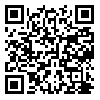دوره 14، شماره 44 - ( زمستان 1401 )
جلد 14 شماره 44 صفحات 118-103 |
برگشت به فهرست نسخه ها
Download citation:
BibTeX | RIS | EndNote | Medlars | ProCite | Reference Manager | RefWorks
Send citation to:



BibTeX | RIS | EndNote | Medlars | ProCite | Reference Manager | RefWorks
Send citation to:
Taleghani D, Saremirad A. (2022). Investigation of Genotype-Environment Interaction Effect on Sugar Yield and Determination of Stability of Sugar Beet (Beta Vulgaris L.) Hybrids. J Crop Breed. 14(44), 103-118. doi:10.52547/jcb.14.44.103
URL: http://jcb.sanru.ac.ir/article-1-1363-fa.html
URL: http://jcb.sanru.ac.ir/article-1-1363-fa.html
طالقانی داریوش، صارمی راد علی. بررسی تأثیر برهمکنش ژنوتیپ- محیط بر عملکرد قند و تعیین پایداری هیبریدهای چغندرقند (.Beta vulgaris L) پژوهشنامه اصلاح گیاهان زراعی 1401; 14 (44) :118-103 10.52547/jcb.14.44.103
بررسی تأثیر برهمکنش ژنوتیپ- محیط بر عملکرد قند و تعیین پایداری هیبریدهای چغندرقند (.Beta vulgaris L)
1- مؤسسه تحقیقات اصلاح و تهیه بذر چغندرقند، سازمان تحقیقات، آموزش و ترویج کشاورزی، کرج، ایران
2- گروه زراعت و اصلاح نباتات، دانشگاه آزاد اسلامی، واحد کرج، باشگاه پژوهشگران و نخبگان جوان، کرج، ایران
2- گروه زراعت و اصلاح نباتات، دانشگاه آزاد اسلامی، واحد کرج، باشگاه پژوهشگران و نخبگان جوان، کرج، ایران
چکیده: (2204 مشاهده)
چکیده مبسوط
مقدمه و هدف: چغندرقند یک محصول بسیار مهم کشاورزی میباشد که صرفاً بهطور تخصصی در صنعت قند مورد استفاده قرار میگیرد و بهعنوان یکی از مهمترین منابع تولید قند به شمار میرود. عملکرد و کیفیت قند در چغندرقند بهوسیله ژنوتیپ، محیط و برهمکنش میان آنها کنترل میشود. از اینرو، مطالعه حاضر بهمنظور بررسی تأثیر برهمکنش ژنوتیپ- محیط بر عملکرد قند هیبریدهای مختلف چغندرقند پایهریزی و به مرحله اجرا در آمد.
مواد و روشها: اثر برهمکنش ژنوتیپ- محیط بر عملکرد قند و تعیین پایداری و سازگاری 155 هیبرید چغندرقند بههمراه یک شاهد داخلی (سینا) و چهار شاهد خارجی (نووودورا، مودکس، لوریکوئیت و پیرولا) مورد بررسی قرار گرفت. هیبریدهای منوژرم در قالب طرح آماری مقایسه عملکرد مقدماتی (آگمنت) در هفت منطقه خوی، شیراز، کرج، کرمانشاه، مشهد، میاندوآب و همدان در سال 1399 کشت شدند. پس از برداشت محصول و برآورد عملکرد قند مربوط به هر یک از هیبریدهای آزمایشی، تجزیه پایداری ویژگی مذکور با بهکارگیری روش گرافیکی GGE biplot انجام شد.
یافتهها: تجزیه پایداری عملکرد قند به روش گرافیکی GGE بایپلات نشان داد که بر اساس نمودار چندضلعی، رقم پیرولا در کرمانشاه و میاندوآب، هیبرید شماره 96 در همدان، کرج، شیراز و مشهد و هیبرید شماره 11 در خوی دارای بیشترین سازگاری و عملکرد قند بودند. رتبهبندی محیطها از بهترین محیط به سمت نامناسبترین محیط به ترتیب بهصورت همدان، شیراز، میاندوآب، کرج، مشهد، کرمانشاه و خوی بود. نمودار رتبهبندی هیبریدها بر اساس هیبرید ایدهآل و همچنین نمودار رتبهبندی هیبریدها بر اساس میانگین عملکرد و پایداری، نشان داد که هیبرید شماره 96 بهعنوان بهترین و پایدارترین هیبرید میباشد. مناطق مورد بررسی به سه محیط بزرگ (ابر محیط) تقسیم شدند، بهطوریکه کرمانشاه و میاندوآب بهعنوان اولین محیط بزرگ، همدان، کرج، شیراز و مشهد بهعنوان دومین محیط بزرگ و خوی بهعنوان سومین محیط بزرگ شناخته شد.
نتیجهگیری: نتایج نشان داد که برهمکنش ژنوتیپ- محیط بر عملکرد قند هیبریدهای اصلاحی چغندرقند تأثیرگذار بوده و سبب ایجاد نوسان عملکرد از محیطی به محیط دیگر شده است. بهطور کلی نظر به عملکرد قند خوب برخی از هیبریدها، هیبریدهای منتخب به دو گروه تقسیم شده و تعدادی از آنها وارد آزمونهای معرفی رقم گردیدند و مابقی در قالب طرحهای تکرار دار، در چند منطقه ارزیابی تکمیلی شده و سپس بهترینهای آنها بهعنوان رقم معرفی میشوند.
مقدمه و هدف: چغندرقند یک محصول بسیار مهم کشاورزی میباشد که صرفاً بهطور تخصصی در صنعت قند مورد استفاده قرار میگیرد و بهعنوان یکی از مهمترین منابع تولید قند به شمار میرود. عملکرد و کیفیت قند در چغندرقند بهوسیله ژنوتیپ، محیط و برهمکنش میان آنها کنترل میشود. از اینرو، مطالعه حاضر بهمنظور بررسی تأثیر برهمکنش ژنوتیپ- محیط بر عملکرد قند هیبریدهای مختلف چغندرقند پایهریزی و به مرحله اجرا در آمد.
مواد و روشها: اثر برهمکنش ژنوتیپ- محیط بر عملکرد قند و تعیین پایداری و سازگاری 155 هیبرید چغندرقند بههمراه یک شاهد داخلی (سینا) و چهار شاهد خارجی (نووودورا، مودکس، لوریکوئیت و پیرولا) مورد بررسی قرار گرفت. هیبریدهای منوژرم در قالب طرح آماری مقایسه عملکرد مقدماتی (آگمنت) در هفت منطقه خوی، شیراز، کرج، کرمانشاه، مشهد، میاندوآب و همدان در سال 1399 کشت شدند. پس از برداشت محصول و برآورد عملکرد قند مربوط به هر یک از هیبریدهای آزمایشی، تجزیه پایداری ویژگی مذکور با بهکارگیری روش گرافیکی GGE biplot انجام شد.
یافتهها: تجزیه پایداری عملکرد قند به روش گرافیکی GGE بایپلات نشان داد که بر اساس نمودار چندضلعی، رقم پیرولا در کرمانشاه و میاندوآب، هیبرید شماره 96 در همدان، کرج، شیراز و مشهد و هیبرید شماره 11 در خوی دارای بیشترین سازگاری و عملکرد قند بودند. رتبهبندی محیطها از بهترین محیط به سمت نامناسبترین محیط به ترتیب بهصورت همدان، شیراز، میاندوآب، کرج، مشهد، کرمانشاه و خوی بود. نمودار رتبهبندی هیبریدها بر اساس هیبرید ایدهآل و همچنین نمودار رتبهبندی هیبریدها بر اساس میانگین عملکرد و پایداری، نشان داد که هیبرید شماره 96 بهعنوان بهترین و پایدارترین هیبرید میباشد. مناطق مورد بررسی به سه محیط بزرگ (ابر محیط) تقسیم شدند، بهطوریکه کرمانشاه و میاندوآب بهعنوان اولین محیط بزرگ، همدان، کرج، شیراز و مشهد بهعنوان دومین محیط بزرگ و خوی بهعنوان سومین محیط بزرگ شناخته شد.
نتیجهگیری: نتایج نشان داد که برهمکنش ژنوتیپ- محیط بر عملکرد قند هیبریدهای اصلاحی چغندرقند تأثیرگذار بوده و سبب ایجاد نوسان عملکرد از محیطی به محیط دیگر شده است. بهطور کلی نظر به عملکرد قند خوب برخی از هیبریدها، هیبریدهای منتخب به دو گروه تقسیم شده و تعدادی از آنها وارد آزمونهای معرفی رقم گردیدند و مابقی در قالب طرحهای تکرار دار، در چند منطقه ارزیابی تکمیلی شده و سپس بهترینهای آنها بهعنوان رقم معرفی میشوند.
فهرست منابع
1. Barah, B., H. Binswanger, B. Rana and N. Rao. 1981. The use of risk aversion in plant breeding; concept and application. Euphytica, 30(2): 451-458. [DOI:10.1007/BF00034010]
2. Ceccarelli, S. 1996. Positive interpretation of genotype by environment interactions in relation to sustainability and biodiversity. Plant adaptation and crop improvement, 12: 467-486.
3. Cook, D. and R. Scott. 1993. The sugar beet crop: science into practice. New York, USA, Champan and Hall Press, 154 pp. [DOI:10.1007/978-94-009-0373-9]
4. De Vita, P., A. Mastrangelo, L. Matteu, E. Mazzucotelli, N. Virzi, M. Palumbo, M.L. Storto, F. Rizza and L. Cattivelli. 2010. Genetic improvement effects on yield stability in durum wheat genotypes grown in Italy. Field crops research, 119(1): 68-77. [DOI:10.1016/j.fcr.2010.06.016]
5. Duvick, D.N., J. Smith and M. Cooper. 2004. Changes in performance, parentage, and genetic diversity of successful corn hybrids, 1930-2000. edn. C. W. Smith, J. Betrˇıan and E. C. A. Runge, editors, JHoboken, NJ, ohn Wiley & Sons, 65-97 pp.
6. Esmaeilzadeh Moghaddam, M., S. Tahmasebi, G. Ayeneh, H. Moghadam, K. Mahmoudi, M. Sayyahfar, S. Ghaffari and H. Zali. 2018. Evaluation of grain yield stability of bread wheat (Triticum aestivum L.) promising lines in warm and dry regions of Iran. Iranian Journal of Crop Sciences, 20(1): 61-76.
7. Evans, L. 1993. Crop evolution, adaptation and yield.,(Cambridge University Press: New York).
8. Evans, L. and R. Fischer. 1999. Yield potential: its definition, measurement, and significance. Crop Science, 39(6): 1544-1551. [DOI:10.2135/cropsci1999.3961544x]
9. FAO. 2018. Food and agriculture organization. World Food and Agriculture - Statistical Pocketbook,. [DOI:10.4060/cb1521en]
10. Farshadfar, E., R. Mohammadi, M. Aghaee and Z. Vaisi. 2012. GGE biplot analysis of genotype x environment interaction in wheat-barley disomic addition lines. Australian Journal of Crop Science, 6(6): 1074-1079.
11. Hassani, M., H. Hamze and H. Mansouri. 2021. Evaluation of adaptability and stability of root yield and white sugar yield (Beta vulgaris L.) in sugar beet genotypes using multivariate AMMI and GGE biplot method. Journal of Crop Breeding, 13(37): 222-235.
12. Hassani, M., B. Heidari, A. Dadkhodaie and P. Stevanato. 2018. Genotype by environment interaction components underlying variations in root, sugar and white sugar yield in sugar beet (Beta vulgaris L.). Euphytica, 214(4): 1-21. [DOI:10.1007/s10681-018-2160-0]
13. Hoffmann, C.M. and C. Kenter. 2018. Yield potential of sugar beet-have we hit the ceiling? Frontiers in plant science, 9: 1-6. [DOI:10.3389/fpls.2018.00289]
14. Hoffmann, C.M. and J. Loel. 2015. Bedeutung der züchtung für den ertragsanstieg von zuckerrüben. Sugar Ind, 140: 48-56. [DOI:10.36961/si16195]
15. Jaggard, K., H. Koch, J.A. Sanz, A. Cattanach, R. Duval, H. Eigner, G. Legrand, R. Olsson, A. Qi and J. Thomsen. 2012. The yield gap in some sugar beet producing countries. International sugar journal, 114(1363): 496-499.
16. Jaggard, K., A. Qi and M. Semenov. 2007. The impact of climate change on sugarbeet yield in the UK: 1976-2004. The Journal of Agricultural Science, 145(4): 367-375. [DOI:10.1017/S0021859607006922]
17. Jaggard, K.W., A. Qi and E.S. Ober. 2010. Possible changes to arable crop yields by 2050. Philos. Trans. R. Soc. B Biol. Science , 365(1): 2835-2851. [DOI:10.1098/rstb.2010.0153]
18. Kaya, Y., M. Akçura and S. Taner. 2006. GGE-biplot analysis of multi-environment yield trials in bread wheat. Turkish Journal of Agriculture and Forestry, 30(5): 325-337.
19. Kendal, E. 2016. GGE biplot analysis of multi-environment yield trials in barley (Hordeum vulgare L.) cultivars. Ekin Journal of Crop Breeding and Genetics, 2(1): 90-99.
20. Kunz, M., D. Martin and H. Puke. 2002. Precision of beet analyses in Germany explained for polarization. Zuckerindustrie, 127(1): 13-21.
21. Lin, C. and M. Binns. 1988. A method of analyzing cultivar x location x year experiments: a new stability parameter. Theoretical and applied genetics, 76(3): 425-430. [DOI:10.1007/BF00265344]
22. Makumbi, D., A. Diallo, F. Kanampiu, S. Mugo and H. Karaya. 2015. Agronomic performance and genotype x environment interaction of herbicide-resistant maize varieties in Eastern Africa. Crop Science, 55: 540-555. [DOI:10.2135/cropsci2014.08.0593]
23. Märländer, B., C. Hoffmann, H.J. Koch, E. Ladewig, R. Merkes, J. Petersen and N. Stockfisch. 2003. Environmental situation and yield performance of the sugar beet crop in Germany: heading for sustainable development. Journal of Agronomy and Crop Science, 189(4): 201-226. [DOI:10.1046/j.1439-037X.2003.00035.x]
24. Mohammadi, R., M. Armion, D. Kahrizi and A. Amri. 2012. Efficiency of screening techniques for evaluating durum wheat genotypes under mild drought conditions. International Journal of Plant Production, 4(1): 11-24.
25. Monteiro, F., L. Frese, S. Castro, M.C. Duarte, O.S. Paulo, J. Loureiro and M.M. Romeiras. 2018. Genetic and genomic tools to asssist sugar beet improvement: the value of the crop wild relatives. Frontiers in plant science, 9: 74-85. [DOI:10.3389/fpls.2018.00074]
26. Mostafavi, K., M. Orazizadeh, A. Rajabi and M. N. Ilkaei. 2018. Stability and adaptability analysis in sugar beet varieties for sugar content using GGE-biplot and AMMI methods. Bulgarian Journal of Agricultural Science, 24(1): 40-45.
27. Najafi Mirak, T., M. Dastfal, B. Andarzian, H. Farzadi, M. Bahari and H. Zali. 2018. Evaluation of durum wheat cultivars and promising lines for yield and yield stability in warm and dry areas using AMMI model and GGE biplot. Journal of Crop Breeding, 10(28): 1-12. [DOI:10.29252/jcb.10.28.1]
28. Nassir, A. L. and O. J. Ariyo. 2011. Genotype x environment interaction and yield-stability analyses of rice grown in tropical inland swamp. Notulae Botanicae Horti Agrobotanici Cluj-Napoca, 39(1): 220-225. [DOI:10.15835/nbha3915591]
29. Omrani, S., A. Omrani, M. Afshari, A. Saremirad, S. Bardehji and P. Foroozesh. 2019. Application of Additive Main Effects and Multiplicative Interaction and Biplot Graphical Analysis Multivariate Methods to Study of Genotype-Environment Interaction on Safflower Genotypes Grain Yield. Journal of Crop Breeding 11(31): 153-163 (In Persian). [DOI:10.29252/jcb.11.31.153]
30. Reinfeld, E., G. Emmerich, C. Baumgarten, Winner and U. Beiss. 1974. Zur Voraussage des Melassez zuckersaus Ruben analysen Zucker. edn. D. A. Cooke and R. K. Scott, editors, London, UK., Chapman & Hall, World Crop Series, 2-5 pp.
31. Ribeiro, I.C., C. Pinheiro, C.M. Ribeiro, M.M. Veloso, M.C. Simoes-Costa, I. Evaristo, O.S. Paulo and C. P. Ricardo. 2016. Genetic diversity and physiological performance of Portuguese wild beet (Beta vulgaris spp. maritima) from three contrasting habitats. Frontiers in plant science, 7(1): 1293. [DOI:10.3389/fpls.2016.01293]
32. Sabaghnia, N., H. Dehghani and S.H. Sabaghpour. 2008. Graphic analysis of genotype by environment interaction for lentil yield in Iran. Agronomy Journal, 100(3): 760-764. [DOI:10.2134/agronj2006.0282]
33. Saremirad, A. and K. Mostafavi. 2021. Using AMMI and Biplot Graphical Analysis Multivariate Methods to Evaluate the Effect of Genotype-Environment Interaction in Cotton Genotypes. Iranian Journal of Cotton Researches, 8(2): 127-144 (In Persian).
34. Saremirad, A., K. Mostafavi and A. Mohammadi. 2020. Genotype- Environment Interaction Study Base GGE biplot Method for Kernel Yield in Sunflower (Helianthus annuus L.) Cultivars. Journal of Crop Breeding, 12(34): 43-53. [DOI:10.29252/jcb.12.34.43]
35. Signor, C.E.L., S. Dousse, J. Lorgeou, J.B. Denis, R. Bonhomme, P. Carolo and A. Charcosset. 2001. Interpretation of genotype× environment interactions for early maize hybrids over 12 years. Crop Science, 41(3): 663-669. [DOI:10.2135/cropsci2001.413663x]
36. Simmonds, N. 1991. Selection for local adaptation in a plant breeding programme. Theoretical and applied genetics, 82(3): 363-367. [DOI:10.1007/BF02190624]
37. Studnicki, M., T. Lenartowicz, K. Noras, E. Wójcik-Gront and Z. Wyszyński. 2019. Assessment of stability and adaptation patterns of white sugar yield from sugar beet cultivars in temperate climate environments. Agronomy, 9(7): 1-11. [DOI:10.3390/agronomy9070405]
38. Tollenaar, M. and E. Lee. 2002. Yield potential, yield stability and stress tolerance in maize. Field crops research, 75(2-3): 161-169. [DOI:10.1016/S0378-4290(02)00024-2]
39. Trimpler, K., N. Stockfisch and B. Märländer. 2017. Efficiency in sugar beet cultivation related to field history. Eur. Journal Agron, 91: 1-9. [DOI:10.1016/j.eja.2017.08.007]
40. Yan, W. 1999. A study on the methodolgy of cultivar evaluation based on yield trial data with special reference to winter wheat in Ontario.
41. Yan, W. 2016. Analysis and handling of G× E in a practical breeding program. Crop Science, 56(5): 2106-2118. [DOI:10.2135/cropsci2015.06.0336]
42. Yan, W., L. Hunt, Q. Sheng and Z. Szlavnics. 2000. Cultivar evaluation and mega‐environment investigation based on the GGE biplot. Crop Science, 40(3): 597-605. [DOI:10.2135/cropsci2000.403597x]
43. Yan, W. and M.S. Kang. 2002. GGE biplot analysis: A graphical tool for breeders, geneticists, and agronomists. CRC press. [DOI:10.1201/9781420040371]
44. Yan, W., M.S. Kang, B. Ma, S. Woods and P.L. Cornelius. 2007. GGE biplot vs. AMMI analysis of genotype‐by‐environment data. Crop Science, 47(2): 643-653. [DOI:10.2135/cropsci2006.06.0374]
45. Yan, W. and I. Rajcan. 2002. Biplot analysis of test sites and trait relations of soybean in Ontario. Crop science, 42(1): 11-20. [DOI:10.2135/cropsci2002.1100]
46. Yan, W. and N.A. Tinker. 2005. An integrated biplot analysis system for displaying, interpreting, and exploring genotype× environment interaction. Crop Science, 45(3): 1004-1016. [DOI:10.2135/cropsci2004.0076]
ارسال پیام به نویسنده مسئول
| بازنشر اطلاعات | |
 |
این مقاله تحت شرایط Creative Commons Attribution-NonCommercial 4.0 International License قابل بازنشر است. |





